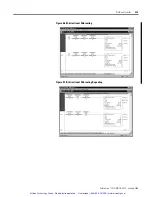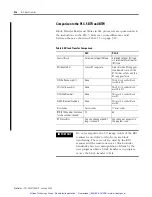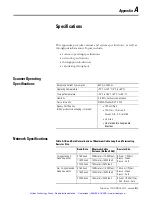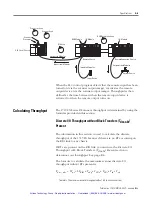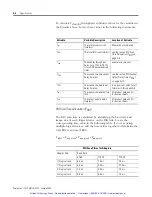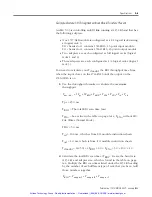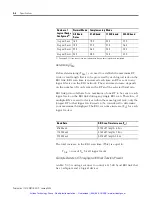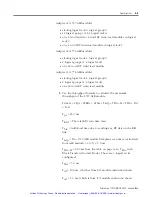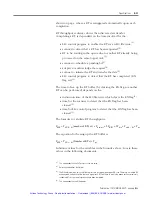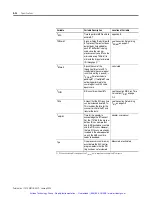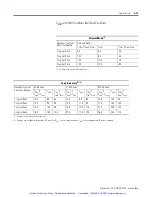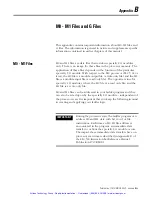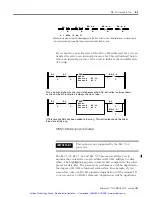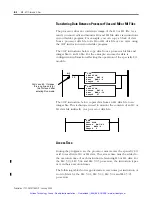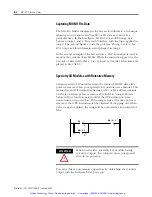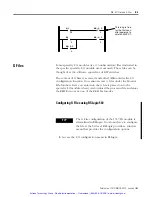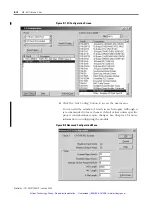
Publication 1747-UM013B-EN-P - January 2005
Specifications
A-11
shown on page, where a BT is retriggered automatically upon each
completion.
BT throughput is
always
slower than discrete data transfer.
Completing a BT is dependent on the time involved for the:
•
SLC control program to enable the BT via an M0 file write
(1)
•
scanner to detect that a BT has been requested
(2)
•
BT to be waiting in the queue due to another BT already being
processed on the same logical rack
(3)
•
scanner to schedule a pending bit
(2)
•
adapter to acknowledge the request
(4)
•
scanner to initiate the BT and transfer the data
(2)
•
SLC control program to detect that the BT has completed (DN
flag set)
(1)
The time to free up the BT buffer (by clearing the EN flag so another
BT can be performed) depends on the:
•
instruction time of the M0 file write which clears the EN flag
(1)
•
time for the scanner to detect that the EN flag has been
cleared
(2)
•
time for SLC control program to detect that the DN flag has been
cleared
(1)
The formula to calculate BT throughput is:
The equation for freeing up the BT buffer is:
Substitute values for the variables in the formulas above. Locate these
values in the following documents:
(1)
This is dependent on the SLC processor you are using.
(2)
Refer to the equations that follow.
(3)
The RIO network allows only one BT per logical rack (not logical device) per RIO scan. Therefore, if multiple BTs
are performed on devices within the same logical rack, BTs will have to wait in the queue until any previously
scheduled BTs for the same logical rack have been completed.
(4)
This is dependent on the RIO adapter.
T
M
0
T
SN
0
bt
–
number of BTs +1
(
)
T
btwait
2
T
RIO
2
T
btx
T
adp
bt
–
T
ps
+
+
+
+
+
+
T
M
0
T
SNo
bt
–
Number of BTs
(
)
T
ps
+
+
Artisan Technology Group - Quality Instrumentation ... Guaranteed | (888) 88-SOURCE | www.artisantg.com

